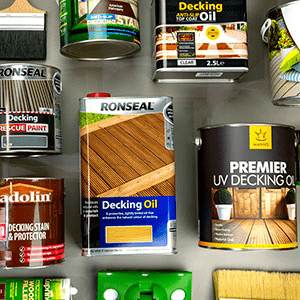Wood Filler FAQ's
Help needed on how to fill gaps in floorboards?
When filling gaps in floorboards it's important to use a filler that is both strong and flexible. This is to allow for the movement of the floor boards when walked on plus the shrinking and expansion of the gaps because of temperature and moisture changes. General wood fillers can crack and fall into the gaps over time. We recommend Bona Gap Master or Osmo Interior Gap Sealer. Both fillers are ideal for sealing gaps between floor boards prior to sanding and finishing.
Can I use a wood filler to repair minor scratches?
Minor scratches on stained wood can spoil the appearance of wooden furniture and other wooden surfaces. Using a product such as, Colron Liquid Scratch Cover can help to disguise the affected area.
For deeper scratches and other surface imperfections Colron Wax Repair Sticks or Morrells Wax Filler Sticks may be a better option. Wax filler sticks can be easily melted and intermixed to better match the colour of the surface to be repaired.
Which is the best wood filler?
There are a wide range of wood fillers including water-based, solvent-based, single-part, 2-pack, coloured and neutral, which is best is largely down to the type of project and the requirements of the filler. For example, flexible fillers are better for filling gaps between floorboards, 2-pack fillers are more durable and can be nailed and screwed. Gel fillers that are mixed with sanding dust can produce a more natural 'wood like' repair that can be sanded and stained to match the surrounding wood. See our full range of wood fillers to find the one that's best for your project.
Can I use the mix and fill products to fill the gaps between my floor boards?
We do not recommend using these products between floorboards as they don't offer enough flexibility. This product is designed for engineered and parquet flooring. We would recommend the Bona Gap Master or the Osmo Interior Gap Sealer.
I am installing a surround to my front door (exterior side), it is currently pine and I am intending to stain it cedar using the Osmo natural oil wood stain. Would you recommend using the pine shade Osmo exterior gap filler to then be stained or using the redwood shade? Thanks.
Colour matching a filler to a wood can be tricky and will likely require some experimentation to get the best match. Unfortunately Osmo Exterior Gap Sealer is not stainable so if choosing this product, either the 'Redwood' or 'Dark Brown' might be the better options to try. Generally speaking, it looks better if the filler is the same colour or darker than the surrounding wood.
The alternative to the Osmo Exterior Gap Sealer is to use a pre-coloured filler or a stainable, exterior wood filler. This means further experimentation with fillers and stains however to achieve the desired colour. Using a traditional filler instead of a tube like gap filler may also be more tricky to get a neat, tidy finish around a door frame and the adjoining brick work / masonry.
Colours are always subjective and the only way to get the finish that meets your expectations is through testing and experimentation.
Which type of wood filler should I use on interior and exterior wood?
We've put together some useful tips and advice on how to use wood filler on both interior and exterior woodwork in our blog.
Wood Filler related blog posts
Disclaimer: Whilst every attempt has been made to provide product information that is as accurate as possible, it's important to clarify that trees and the wood that they produce can be affected by many factors. For example, the same species of tree grown in the same wood, even in close proximity, will be affected by age along with the amount of sunlight and water they receive. Other naturally occurring biological and environmental factors will also influence the density and grain of the wood as well as the moisture and oil content of the timber. No two trees are the same, meaning each piece of wood has the potential to look and react differently to the same wood finish. For example, product adhesion, colour variations, absorption rates and sheen levels. It is for this reason that we always strongly recommend carrying out test areas before starting any project


